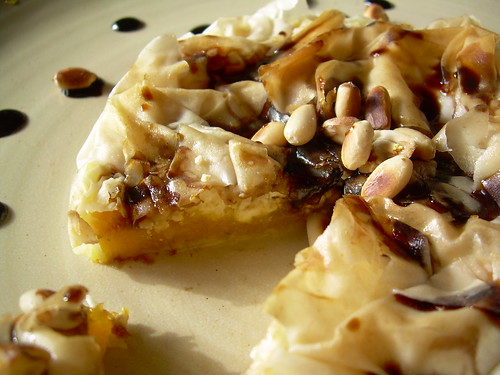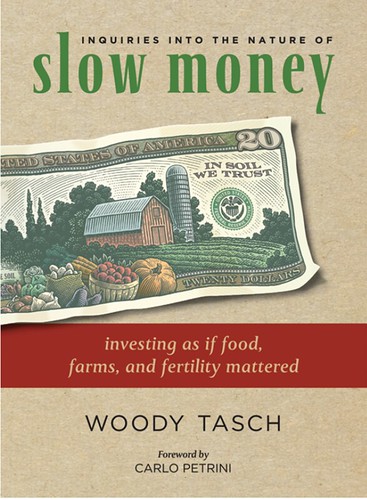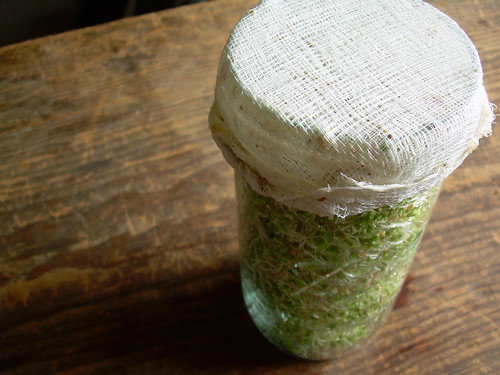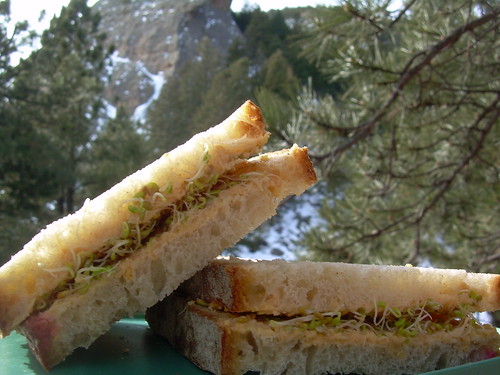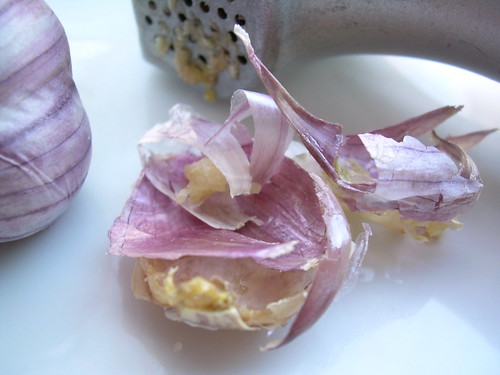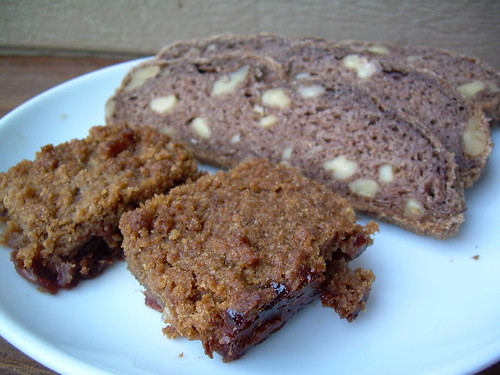
I canned a bunch of tomato sauce this past summer. I love eating it on pasta, but you know, variety is nice. I think baked polenta is a good alternative. I like to jazz up my polenta with herbs like rosemary and frozen veggies like spinach, corn, and squash. Sounds fancy, huh? Restaurants seem to think so which is funny because polenta was originally peasant food. Oh well.
Ingredients:
6 c. water
2 c. coarse yellow cornmeal
veggie bouillon
herbs (rosemary)
frozen veggies (spinach, corn, squash)
olive oil
In a medium sized pot, bring the water, bouillon, and miscellaneous herbs to a boil. Turn the heat down to low and slowly pour in the cornmeal. Stir constantly for about 20 minutes. Add in the frozen veggies. Pour the creamy polenta mix into an oiled 9x13 baking pan and refrigerate for a few hours. Slice up the chilled polenta. We like triangles. Brush the top of the polenta with oil and bake for 30-40 minutes at 400 degrees F or until golden brown.
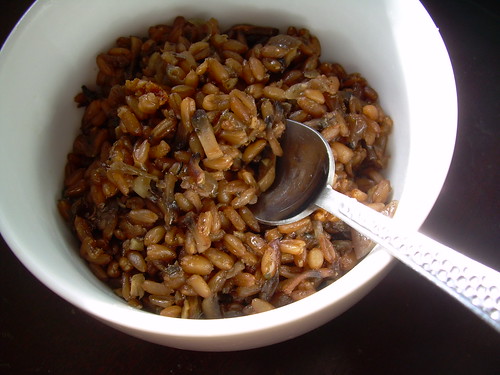 Kuba is a czech barley and mushroom casserole--a peasant dish that's traditionally served on Christmas Eve. In fact, when Julie and I went to the Unitarian Congregation in Prague on Christmas Eve, they served kuba and beer! The ingredients are barley, dried or fresh mushrooms, onion, garlic, marjoram, butter, salt, and pepper.
Kuba is a czech barley and mushroom casserole--a peasant dish that's traditionally served on Christmas Eve. In fact, when Julie and I went to the Unitarian Congregation in Prague on Christmas Eve, they served kuba and beer! The ingredients are barley, dried or fresh mushrooms, onion, garlic, marjoram, butter, salt, and pepper.


